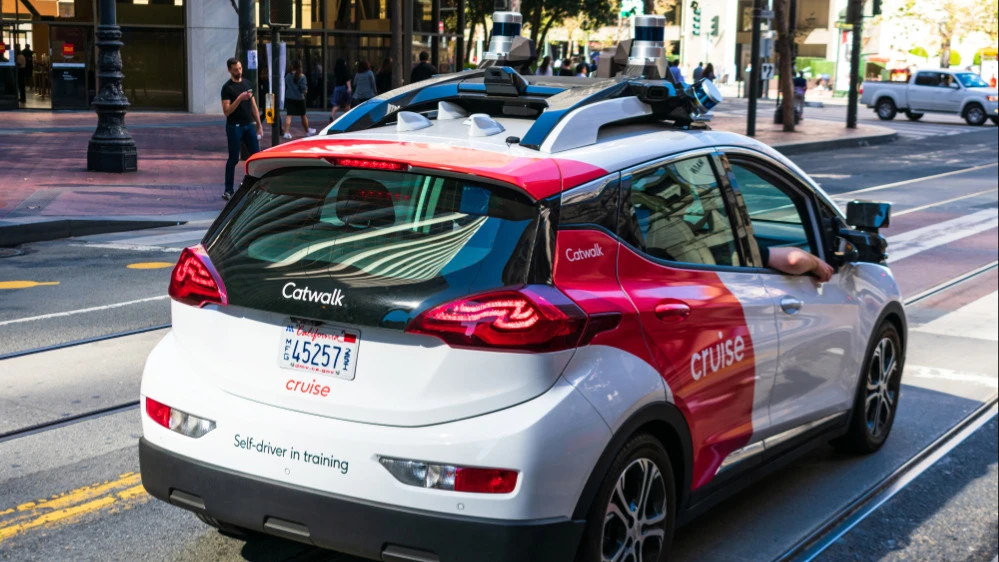GM will resume development of personal unmanned vehicles after abandoning robotaxis
GM vehicles are already collecting data on U.S. roads to train unmanned systems

Automaker General Motors intends to bring back some former employees of its Cruise robotaxi division, which closed last year, to restart its autonomous car project - now for personal use rather than commercial use, sources familiar with the situation told Bloomberg. The company confirmed it is testing cars with a driver behind the wheel on public roads to generate data sets for training autonomous systems.
Details
GM plans to strengthen its unmanned driving system development team, including bringing back some employees from the shuttered Cruise robotaxi project and hiring new specialists for the California office and other locations. GM product director Sterling Anderson, who joined GM in May, said this in a closed-door meeting with employees on Aug. 6, according to Bloomberg sources. Anderson is responsible for the entire product development cycle, from gasoline-powered cars to electric vehicles and autonomous driving technologies. He previously led Autopilot at Tesla and then worked at Aurora Innovation, which specializes in unmanned trucks.
According to Bloomberg's sources, the company's first phase will focus on developing autonomous driving technology without human intervention, but with humans in the driver's seat. The ultimate goal is a fully autonomous car.
"We are accelerating the development of unmanned technologies that operate without active human involvement," GM spokeswoman Chaiti Xi Sen told Bloomberg. According to her, GM's fleet of vehicles, which are already driving on U.S. roads, are equipped with lidars - laser scanners - and are collecting data to "create simulation models that will set the direction of development," that is, generate data for training artificial intelligence.
Context
Plans to expand the unmanned driving division's team indicate that GM CEO Mary Barra still sees promise in unmanned vehicles despite the shutdown of the Cruise robotaxi project last year, Bloomberg notes. Cruise failed after an incident that left a pedestrian seriously injured. It prompted a sharp response from regulators, the firing of nine top executives and the resignation of the project's CEO, Kyle Vogt. Earlier this year, GM laid off about 1,000 Cruise employees - half of its workforce.
GM also reported the high cost of the project. But back then, the automaker promised that it would continue working on an autonomous car for personal use. A few years ago, the company expected to release such a car by the mid-2020s, but has since abandoned any timeline. Work on the project continues in parallel with the development of the Super Cruise system, GM's proprietary solution for hands-free driving.
Despite the cuts at Cruise, Barra emphasizes that GM remains a proponent of autonomous vehicle development. During her July 22 quarterly report presentation, she cited autonomous technology, supply chain localization and battery innovation as key priorities for the company.
Why this market is important to automakers
According to research and consulting firm MarketsandMarkets, the market for Level 3 autonomous vehicles ("eyes-off" - driving without the driver watching the road) will grow from 291,000 units in 2025 to 8.7 million by 2035. Annual growth will average approximately 40%.
In addition to market flagships such as Tesla and its Chinese competitor BYD, Mercedes-Benz (Drive Pilot system, approved in Germany and Nevada in the US), BMW (Highway Assistant), Ford (BlueCruise), Stellantis (developing the STLA AutoDrive platform), Toyota (Teammate, being tested in Japan), Honda (Honda Sensing Elite system, certified in Japan), and Chinese automakers XPeng, Xiaomi and NIO are developing their own driver assistance and autonomous driving system technologies.
This article was AI-translated and verified by a human editor
